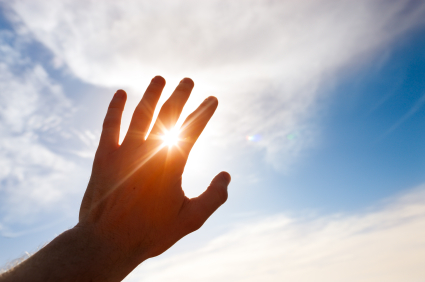 Think of Purim and a lot of things come to mind: costumes, deluxe mishloach manot, wine and food. One thing that doesn’t seem to make the list is spirituality. Despite the idea that we sometimes hear – that Purim is the flip side of Yom Kippur – it often passes without much religious gain. What can we do to change that?
Think of Purim and a lot of things come to mind: costumes, deluxe mishloach manot, wine and food. One thing that doesn’t seem to make the list is spirituality. Despite the idea that we sometimes hear – that Purim is the flip side of Yom Kippur – it often passes without much religious gain. What can we do to change that?
I recently heard about a fascinating study. Someone analyzed Twitter and discovered the following: The people we follow on Twitter seem to live in cities that are similar to our own. More interestingly still, when they plotted this information on a map, it matched a map of airline routes hubs. These hubs are chosen based on similarities between the cities. People were connecting with people in cities for which there are direct flights from where they live.
In other words, even in the world of social media – a world where we might imagine that we are meeting new, diverse people – we still tend to stick to our own.
This brought to mind an article in the Wall Street Journal where the writer bemoaned the lack of community for those who are not religious. He was troubled by the fact that the secular street does not have places where people can meet people who are different from them, places where they can learn together, think together, interact. He compared this with houses of worship, where, he suggested, these types of interactions take place all the time.
I immediately thought of the world of the shul. In communities where there is more than one shul, is his observation correct? Do we meet people with different opinions, levels of religious observance or age demographics? Most of the shuls I see seem to be made up of people who are fairly homogenous, with the right headgear worn to show proper allegiance.
What does all of this have to do with Purim? At the beginning of the Megillah, the Jews are not unified. The upheaval that is going on in Shushan doesn’t seem to concern the Jews in the rest of the empire. Haman describes the Jews as “mefuzar u’mefurad,” spread out and unconnected. Esther recognizes this and tells Mordechai to go and gather the Jews. It is only through unity that we will be saved. For the rest of the Megillah, the shoresh “KHL” – as in the word kehilla – is used to describe the Jews. They have come together.
All of the Mitzvot HaYom, mitzvot of the day, have to do with joining together. Mishloach manot is not about devising a clever theme to match your costume. Purim is not just about spreading cheer to your friends. It is an opportunity to come together. To invite the old lady who has no family to a seudah. To send mishloach manot to the man who sits near you in shul with whom you never quite connect. To give matanot l’evyonim to that guy who collects at your shul and seems completely different from you.
A few years ago, my children decided to send mishloach manot to their dentist, who is not observant. All these year later, the note they included still hangs on the wall in his office. This year, let’s put unity back in our community.
Pesach Sommer is married and has seven children. He is a rebbe at The Yeshiva of Flatbush. He enjoys reading, writing and running. Pesach plans to run the Boston Marathon this April.
The words of this author reflect his/her own opinions and do not necessarily represent the official position of the Orthodox Union.
